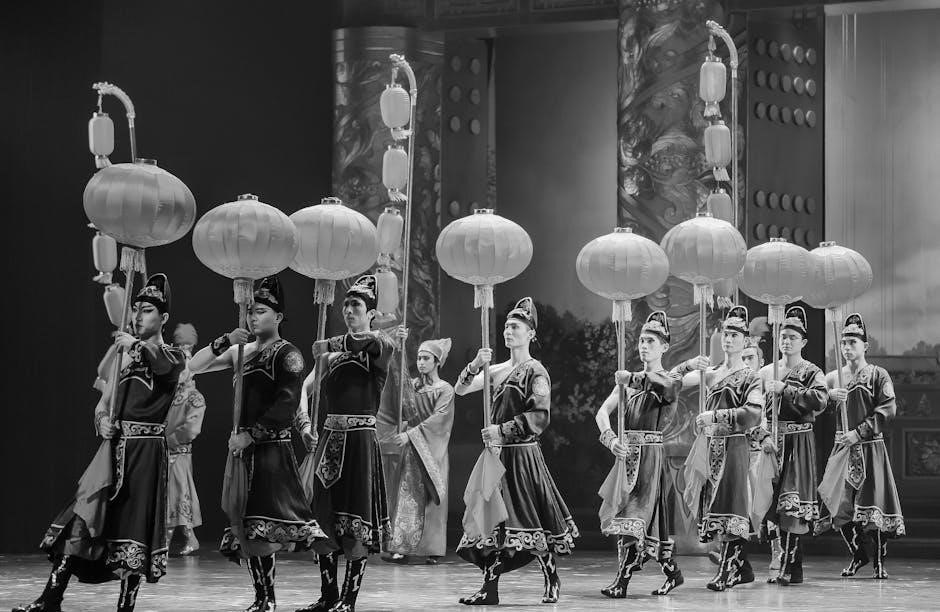Carl Jung, a renowned Swiss psychiatrist, introduced the concept of synchronicity, describing meaningful coincidences that reveal hidden connections. His work, available in PDF formats like “Synchronicity: An Acausal Connecting Principle,” explores this phenomenon, blending psychology, philosophy, and science to understand life’s deeper meaning.
1.1. Who Was Carl Jung?
Carl Gustav Jung was a Swiss psychiatrist and psychoanalyst, born on July 26, 1875, in Kesswil, Switzerland. He is renowned for his theories on the collective unconscious, archetypes, and individuation. Jung’s work laid the foundation for modern depth psychology, influencing fields beyond psychiatry, including philosophy, anthropology, and spirituality. His concept of synchronicity, detailed in works like “Synchronicity: An Acausal Connecting Principle” (available as a PDF), revolutionized understanding of meaningful coincidences, bridging psychology and the mysteries of the universe.
1.2. The Concept of Synchronicity: A Brief Overview
Synchronicity, a term coined by Carl Jung, refers to the occurrence of meaningful coincidences that cannot be explained by causality. It involves the convergence of inner psychological states and external events, suggesting a deeper, universal connection. Jung introduced this concept in his work “Synchronicity: An Acausal Connecting Principle”, which is widely available in PDF format. He viewed synchronicity as evidence of the collective unconscious, where archetypes bridge the gap between the psychic and physical worlds, revealing hidden patterns of meaning.

What is Synchronicity?
Synchronicity, coined by Carl Jung, refers to meaningful coincidences between inner psychological states and external events. His work, available in PDF, explores this phenomenon deeply.
2.1. Definition and Core Principles
Synchronicity, a term coined by Carl Jung, refers to the occurrence of meaningful coincidences between internal psychological states and external events. It suggests that certain events are connected beyond causality, revealing hidden patterns and interconnectedness. Jung emphasized that synchronicity involves an acausal, non-local connection, where events converge to convey personal or universal meaning. This concept challenges traditional views of causality and randomness, proposing a deeper, symbolic order in the universe. His work, detailed in PDF resources like Synchronicity: An Acausal Connecting Principle, remains foundational to understanding this phenomenon.
2.2. The Acausal Connecting Principle
Jung’s acausal connecting principle posits that synchronicity occurs without a causal link, emphasizing meaningful coincidences between internal psychological states and external events. This challenges traditional notions of causality, suggesting a deeper, symbolic order. The principle highlights interconnectedness, where events converge to convey meaning beyond random chance. Detailed in his PDF works, this concept revolutionizes understanding of time, space, and human experience, offering profound insights into the universe’s hidden patterns and interconnectedness.
2.3. Synchronicity vs. Coincidence: Key Differences
Synchronicity, unlike coincidence, involves meaningful connections between events, often reflecting psychological or symbolic significance. Coincidences are random and lack deeper meaning, while synchronicity implies an acausal, intentional alignment. Jung emphasized that synchronicity carries personal or universal significance, whereas coincidences are merely chance occurrences. This distinction underscores the transformative potential of synchronicity, as explored in Jung’s PDF works, highlighting its role in revealing hidden patterns and interconnectedness.

Key Principles of Jung’s Synchronicity
Jung’s synchronicity revolves around meaningful coincidences, the collective unconscious, and archetypes. It highlights acausal connections, transcending traditional causality, and reveals hidden patterns in human experience, as detailed in his PDF works.

3.1. The Collective Unconscious and Its Role
The collective unconscious, a shared psychological reservoir, contains universal archetypes common to all humans. Jung believed synchronicity emerges from this realm, linking individual experiences to universal symbols. This shared reservoir enables meaningful coincidences, revealing hidden patterns and connections. The collective unconscious acts as a bridge, allowing synchronicity to manifest as a guiding force in personal growth and self-discovery, as explored in Jung’s works, including his PDF writings on the subject.
3.2. Archetypes and Their Influence on Synchronicity
Archetypes, universal symbols within the collective unconscious, significantly influence synchronicity by providing a shared mental framework. These archetypes, such as the Mother or Trickster, appear across cultures, shaping meaningful coincidences. Jung believed archetypes guide synchronistic events, revealing deeper connections between the individual and the universe. This alignment of inner and outer experiences highlights the archetypal influence, as explored in Jung’s works, including his PDF writings on synchronicity and psychological principles.
3.3. The Process of Individuation and Synchronicity
The process of individuation, Jung’s central psychological concept, involves integrating the unconscious and conscious mind to achieve wholeness. Synchronicity plays a pivotal role by revealing meaningful connections that guide individuals toward self-realization. These events often symbolize the alignment of personal and collective unconscious elements, facilitating psychological growth. Jung’s writings, such as those in his PDF works, emphasize how synchronicity accelerates individuation by bridging the inner and outer worlds, offering insights into one’s true self and life’s purpose.

Case Studies and Examples from Jung’s Work
Jung’s work includes notable case studies, such as the “Scarab Beetle” incident, where meaningful coincidences aligned with his patients’ psychological states, exemplifying synchronicity.
4.1. The Famous “Scarab Beetle” Incident
In one of Jung’s most documented cases, a patient dreamed of a scarab beetle, an Egyptian symbol of transformation. During the session, a real scarab appeared, aligning with the dream’s imagery. This incident, detailed in his writings, became a cornerstone of his synchronicity concept, illustrating how meaningful coincidences transcend causality and reflect deeper psychological truths.
4.2. Other Notable Examples from Jung’s Practice
Jung documented numerous synchronicity cases beyond the scarab beetle. One involved a patient fixated on a specific number, which later appeared in a dream and real-life events, symbolizing inner transformation. Another case featured recurring symbols in dreams and waking life, aligning with archetypal themes. These examples, detailed in his works like Synchronicity: An Acausal Connecting Principle, highlight how synchronicity bridges the psyche and external reality, offering insights into personal growth and the collective unconscious.
4.3. How These Examples Illustrate the Concept
Jung’s examples, such as the scarab beetle incident, validate his theory of synchronicity by showcasing meaningful coincidences that transcend chance. These events highlight the connection between the collective unconscious and external reality, demonstrating how archetypes manifest in personal experiences. They illustrate synchronicity as a bridge between the inner and outer worlds, revealing hidden patterns and transforming random events into meaningful experiences. These cases, documented in his works like Synchronicity: An Acausal Connecting Principle, provide empirical support for his concept.

The Philosophical Implications of Synchronicity
Synchronicity challenges traditional causality, suggesting a universe where meaningful events intertwine. It implies a deeper, interconnected reality, offering a new worldview that transcends conventional understanding of chance and meaning.
5.1. Challenging Traditional Notions of Causality
Jung’s concept of synchronicity challenges the conventional understanding of causality by introducing meaningful coincidences that lack a direct causal link. These events, though seemingly random, carry profound significance, suggesting an interconnectedness beyond physical causation. This idea expands our perception of reality, moving beyond linear cause-and-effect to a broader, more holistic worldview. It invites us to consider the universe as a web of meaningful relationships, where events converge to reveal deeper truths, thus redefining our understanding of chance and purpose.
5.2. The Idea of Meaning in the Universe
Jung’s synchronicity suggests a universe brimming with hidden meaning, where coincidences are not merely random but reflect deeper connections. This challenges a purely materialistic view, implying life has inherent purpose. By highlighting meaningful events, Jung’s theory invites us to see the universe as an interconnected web, where personal experiences align with universal symbols, suggesting a cosmic order beyond chance. This perspective offers a profound shift in understanding existence, emphasizing meaning over randomness and hinting at a harmonious, intelligible world.
5.3. Synchronicity and the Potential for a New Worldview
Jung’s concept of synchronicity opens the door to a new worldview, shifting from a universe governed by chance to one where meaningful connections prevail. By revealing acausal links between events, synchronicity challenges traditional causality, suggesting a deeper, interconnected reality. This perspective aligns with the collective unconscious and archetypes, offering a holistic understanding of existence. It bridges science and spirituality, proposing a reality where meaning transcends randomness, inviting humanity to embrace a more unified and purposeful cosmic framework.

Synchronicity in Modern Psychology and Science
Modern psychology and science explore synchronicity through research in quantum physics and consciousness studies, building on Jung’s theories to uncover deeper connections between mind and universe.
6.1. Current Research on Synchronicity
Current research on synchronicity explores its connection to quantum physics and consciousness studies, expanding Jung’s theory. Recent studies investigate non-local consciousness and meaningful coincidences, linking them to quantum entanglement. Grounded theory approaches in leadership contexts reveal synchronicity’s role in decision-making and personal growth. Collaborations, such as Jung and Wolfgang Pauli’s work, inspire interdisciplinary approaches. These studies aim to bridge psychology, physics, and philosophy, offering new insights into the nature of meaning and interconnectedness in the modern world.
6.2. The Role of Quantum Physics and Synchronicity
Quantum physics offers a scientific framework for understanding synchronicity, with concepts like entanglement mirroring Jung’s acausal connections. A study suggests quantum entanglement in the vacuum could explain synchronicity, linking non-local events and consciousness. While Jung didn’t explore quantum physics, modern theories bridge his ideas with physics, proposing a universe where meaningful coincidences transcend causality, aligning with his vision of an interconnected reality.
6.3. Jung’s Collaboration with Wolfgang Pauli
Carl Jung collaborated with physicist Wolfgang Pauli, exploring the intersection of psychology and quantum physics. Their joint work delved into synchronicity, proposing it as an acausal connecting principle. This collaboration enriched Jung’s theory, linking it to scientific frameworks. Their discussions, documented in Jung’s writings, highlight the potential for a unified understanding of consciousness and physical reality.

Criticisms and Controversies Surrounding Synchronicity
Jung’s concept of synchronicity has faced skepticism, with critics questioning its scientific basis and lack of empirical evidence. Philosophical debates also arise regarding its implications on meaning and causality;
7.1. Scientific Skepticism and Criticisms
Carl Jung’s concept of synchronicity has faced significant scientific skepticism due to its lack of empirical evidence and testable framework. Critics argue that synchronicity is often anecdotal, relying on subjective interpretation rather than objective measurement. The scientific community remains doubtful about its validity as a universal principle, viewing it as a psychological phenomenon rather than an observable scientific fact. Despite Jung’s collaboration with physicists like Wolfgang Pauli, synchronicity’s empirical grounding remains unresolved, fueling ongoing debates about its scientific credibility.
7.2. Philosophical Debates About the Concept
Jung’s synchronicity sparks philosophical debates about meaning, causality, and the nature of reality. Critics question its implications for determinism and free will, while others see it as a bridge between psyche and matter. The concept challenges traditional causality, proposing an acausal connecting principle. Philosophers debate whether synchronicity reflects an objective universe of meaning or a subjective human experience. These discussions highlight the profound implications of Jung’s idea for understanding reality and human perception, making it a focal point of philosophical inquiry.
7.3. How Jung Addressed These Criticisms
Jung acknowledged the challenges in empirically verifying synchronicity but emphasized its validity through clinical observations and meaningful patient experiences. He argued that synchronicity, while acausal, reveals a deeper, non-material connection between psyche and matter. Jung also collaborated with physicist Wolfgang Pauli, exploring parallels with quantum mechanics to strengthen his theory. By focusing on the subjective experience of meaning, Jung defended synchronicity as a significant phenomenon deserving further exploration, even in the face of scientific skepticism.

Practical Applications of Synchronicity
Synchronicity offers tools for personal growth, guiding individuals to recognize meaningful patterns in life. It enhances dream analysis, fosters self-awareness, and provides insights for navigating life’s challenges effectively.
8.1. Synchronicity in Dream Analysis
Jung often connected synchronicity with dream analysis, suggesting that dreams could reveal hidden patterns and meaningful coincidences. By examining symbols and themes in dreams, individuals can uncover unconscious motivations and desires. Synchronicity in this context helps bridge the gap between the inner world of dreams and the outer reality of waking life, offering insights into personal growth and self-awareness. This approach is detailed in Jung’s works, such as “Man and His Symbols,” available in PDF formats for deeper exploration.
8.2. Using Synchronicity for Personal Growth
Synchronicity offers a powerful tool for personal growth by revealing meaningful connections between inner experiences and external events. By paying attention to these coincidences, individuals can gain insights into their unconscious patterns and desires. Jung believed that recognizing synchronicity helps align one’s path with their true purpose, fostering self-awareness and transformation. This concept, explored in Jung’s works like “Synchronicity: An Acausal Connecting Principle” (available in PDF), encourages individuals to embrace life’s hidden meanings for profound growth.
8.3. Synchronicity in Everyday Life
Synchronicity often appears in everyday life as meaningful coincidences, guiding individuals toward hidden connections. For instance, encountering recurring symbols or meeting someone who provides timely advice can serve as signs. Jung’s concept, detailed in his PDF works, suggests these events offer insights into personal growth and purpose. By recognizing synchronicity in daily moments, individuals can uncover deeper meanings and align with their inner world, fostering a sense of harmony and direction in life.

Synchronicity and Leadership
Synchronicity offers leaders a unique perspective, enabling them to identify meaningful patterns and inspire teams. By recognizing these events, leaders can foster innovation and alignment with shared goals, enhancing decision-making and collaboration. This concept, explored in Jung’s PDF works, highlights the potential for synchronicity to transform leadership practices and cultivate a more intuitive, connected approach to guiding others.
9.1. The Concept of Synchronicity in Leadership
Synchronicity, as conceptualized by Carl Jung, offers a unique lens for leadership by highlighting meaningful coincidences that guide decision-making and inspire teams. Leaders who embrace synchronicity can tap into intuitive insights, fostering innovation and alignment with organizational goals. This approach, explored in Jung’s PDF works, encourages leaders to recognize patterns and leverage them for strategic advantage, creating a harmonious interplay between personal vision and collective purpose. It promotes a leadership style that values intuition and meaningful connections.
9.2. Case Studies on Synchronicity in Leadership
Case studies reveal how synchronicity influences leadership decisions, fostering innovation and alignment with organizational goals. For instance, a leader might experience a timely conversation that sparks a strategic breakthrough, aligning with Carl Jung’s concept of meaningful coincidences. Such events, as explored in Jung’s PDF works, highlight how synchronicity can guide intuitive decision-making, creating a harmonious interplay between personal vision and collective purpose. These examples demonstrate the practical application of Jung’s theory in real-world leadership scenarios.
9.3. The Potential Benefits for Leaders
Leaders who embrace synchronicity can harness its power to enhance decision-making, fostering intuition and alignment with organizational goals. By recognizing meaningful coincidences, leaders can tap into unconscious patterns, leading to innovative solutions and a deeper connection with their team’s vision. This alignment can cultivate trust, creativity, and a shared sense of purpose, ultimately driving success. Jung’s insights, available in PDF resources, offer leaders a unique lens to navigate complexity and inspire meaningful change.
Jung’s concept of synchronicity offers profound insights into meaningful coincidences, reshaping our understanding of the universe and human experience. His work, accessible in PDF formats, continues to inspire exploration and reflection on life’s deeper connections.
10.1. The Significance of Synchronicity Today
Carl Jung’s concept of synchronicity remains a powerful framework for understanding meaningful coincidences in modern life. Its relevance extends beyond psychology, influencing fields like leadership and personal growth. Today, synchronicity is often explored in relation to quantum physics and interconnectedness, offering insights into the universe’s hidden patterns. Jung’s ideas, accessible in PDF formats, continue to inspire those seeking deeper meaning in life, making synchronicity a timeless and universal concept for self-discovery and holistic understanding.
10.2. Final Thoughts on Jung’s Legacy
Carl Jung’s legacy endures as a profound influence on modern psychology and philosophy. His exploration of the collective unconscious, archetypes, and synchronicity continues to inspire new generations. Jung’s work, accessible in PDF formats, offers timeless insights into human nature and the pursuit of meaning. His ideas transcend traditional boundaries, fostering a deeper understanding of the interconnectedness of the psyche and the world. Jung’s contributions remain a cornerstone for those exploring the mysteries of the mind and the universe.
10.3. Where to Find Jung’s Work on Synchronicity in PDF Format
Carl Jung’s seminal work on synchronicity, “Synchronicity: An Acausal Connecting Principle,” can be found in various digital formats. For a free PDF version, explore academic databases like Google Scholar or ResearchGate, where some users may share the text. Additionally, consider purchasing a digital copy from online bookstores such as Amazon, which offers Kindle editions that can be converted to PDF. Always ensure that you access copyrighted material through legitimate sources to respect intellectual property rights.
